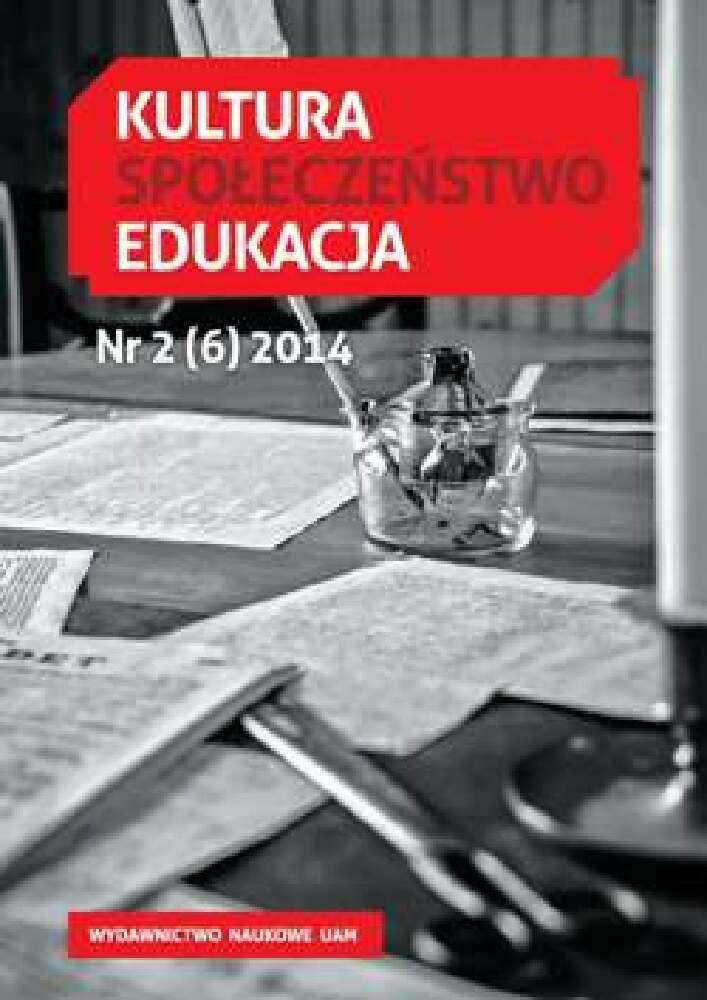Abstrakt
Children at-risk are defined as children who may be found in physical, mental, or emotional situations of risk. Attachment theory assumes a connection between the origin family’s experiences and the attachment patterns in the relations with another person, and many research studies have found that the attachment between the parent and the child has a main role in the child’s normal development. The psychodrama group is one method of intervention that seeks to treat psychological and social problems through drama and provides the child with holding, security, and protection. The children act figures related to problems that trouble them and thus free themselves from distresses and drives and learn to see and understand the self and other people and to create beneficial patterns of behavior and attachment. Treatment with psychodrama has been found to be very effective in work with children who experience distress, both with themselves and with society.Bibliografia
Ainsworth M.S.D., M.C. Blehar, E. Waters, S. Wall. 1978. Patterns of Attachment: A Psychological Study of the Strange Situation. Hillsdale (NJ).
Anderson R. 1992. Clinical Lectures on Klein and Bion. Modan publishers.
Artzi E. 1991. Psychodrama. Dvir Publishing House (Hebrew).
Bartholomew K., L.M. Horowitz. 1991. „Attachment Styles among Young Adults: A Test of Four Category Model”. Journal of Personality and Social Psychology 61: 226-244.
Bartholomew K. 1990. „Avoidance of Intimacy: An Attachment Perspective”. Journal of Social and Personal Relationship, 7: 147-178.
Bartholomew K. 1997. „Adult Attachment Process: Individual and Couple Perspectives”. British Journal of Medical Psychology 70: 249-263.
Ben-Rabi D., P. Kahan-Starvinsky. 2003. Planning Services and Interventions for Children and Youths at the Edge of the Risk Continuum. Jerusalem (Hebrew).
Bion W.R. 1992. Experiences in the Group and Additional Articles. Tel Aviv (Hebrew).
Blatner, H.A. 1973. Acting-in: Practical Applications of Psychodrama Methods. New York: Springer Pub. Com.
Blos P. 1967. The Second Individuation Process. W Adolescent Passage Developmental Issues. New York.
Bowlby J. 1969. Attachment and Loss: Attachment. New York.
Bowlby J. 1973. Attachment and Loss: Separation, anxiety and anger. New York.
Bowlby J. 1980. Attachment and Loss: Loss, sadness and depression. London.
Bowlby J. 1988. „Developmental Psychiatry Comes to Age”. American Journal of Psychiatry” 145: 1-10.
Brennan K.A., P.R. Shaver. 1993. „Attachment Styles and Parental Divorce”. Journal of Marriage and Divorce 21: 161-175.
Collins N.L., S.J. Read. 1990. „Adult Attachment, Working Models, and Relationship Quality In Dating Couples”. Journal of Personality and Social Psychology 58: 644-663.
Dayton T. 1994. The Drama Within: Psychodrama and Experiential Therapy. Deerfield Beach (FL).
Erikson E. 1987. Identity: Youth and Crisis. Tel Aviv.
Fonagy P. 1999. Transgenerational Consistencies of Attachment: A New Theory. Paper presented at the American psychoanalytic Association, Washington (DC). Available online at Psyche Matters.
Foulkes S.H. 1964. Therapeutic Group Analysis. New York.
Foulkes S.H., E.J. Anthony. 1965. Group Psychotherapy: The Psychoanalytic Approach. London.
Freeney J.A., P. Noller. 1990. „Attachment Styles Predictor of Adult Romantic Relationship”. Journal of Personality and Social Psychology 58: 281-291.
Kellerman P.F. 2007. Let’s Face It: Mirror in Psychodrama. W Psychodrama: Advances in Theory and Practice. London.
Kohut H. 2005. How Does Analysis Heal. Tel Aviv (Hebrew).
Lazarus R.S., S. Folkman. 1984. Stress, Appraisal and Coping. New York.
Mikulincer M. 1998. „Attachment Style in Adulthood and Strategies of the Control of Emotions – Work Assumptions and Review of Findings”. Psychology 7 (1): 33-48.
Mikulincer M., I. Erev. 1991. „Attachment Style and the Structure of Romantic Love”. British Journal of Social Psychology 30: 273-291.
Mikulincer M., V. Florian. 1998. The Relationship between Adult Attachment Styles and Emotional and Cognitive Reactions to Stressful Events. W Attachment Theory and Close Relationships, 143-165. New York.
Mikulincer M., N. Horesh. 1999. „Adult Attachment Style and the Perception of Others: The Role of Projective Mechanisms”. Journal of Personality and Social Psychology 76 (6): 1022-1034.
Miller A. 1992. The Drama of the Gifted Child. Tel Aviv (Hebrew).
Mitchell S., M. Black. 2006. Freud and Beyond: History of Modern Psychoanalytic Thinking. Tel Aviv (Hebrew).
Moreno Z.T. 1921. Psychodrama, Surplus Reality and the Art of Healing. London and Philadelphia.
Naharin A. 1985. Stage Instead of Sofa. Tel Aviv (Hebrew).
Pines M. 1985. „Mirroring and Child Development, Psychodynamic and Psychological Interpretation”. Psychoanalytic Inquiry 5 (2): 211-231.
Pistole M.C. 1989. „Attachment in Adult Romantic Relationships: Style of Conflict Resolution and Relationship Satisfaction”. Journal of Social and Personal Relationships 6: 505-510.
Rioch M.J. 1970. „The Work of Bion on Groups”. Psychiatry 33: 56-66.
Rosenwasser N. 1997. Group Instruction – A Reader. Jerusalem (Hebrew).
Shmidt H. 2006. The Prime Minister’s Committee for Children and Youths At-Risk. Report of the Public Committee for the Examination of the Situation of Children At-Risk and in Distress (Hebrew).
Siegel D. 2001. „Toward an Interpersonal Neurobiology of the Developing Mind: Attachment Relationships, `Mindsight`, and Neural Integration”. Infant Mental Health Journal 22 (1-2): 67-94.
Tomison A.M.(1996. „Understanding the Child towards the Year 2000”, Abuse of Children – Prevention 4 (2). Melbourne.
Williams D.R., J.S. House. 1990. Stress, Social Support, Control and Coping: A Social Epidemiological View. W Health Promotion Research, 147-175. New York.
Ziv Y., Y. Baharav. 2001. Group Journey: The Guide for the Instructor of Groups. Gal Press (Hebrew).
Licencja
Prawa autorskie (c) 2017 Zivit Vaxberg

Utwór dostępny jest na licencji Creative Commons Uznanie autorstwa – Bez utworów zależnych 4.0 Międzynarodowe.
